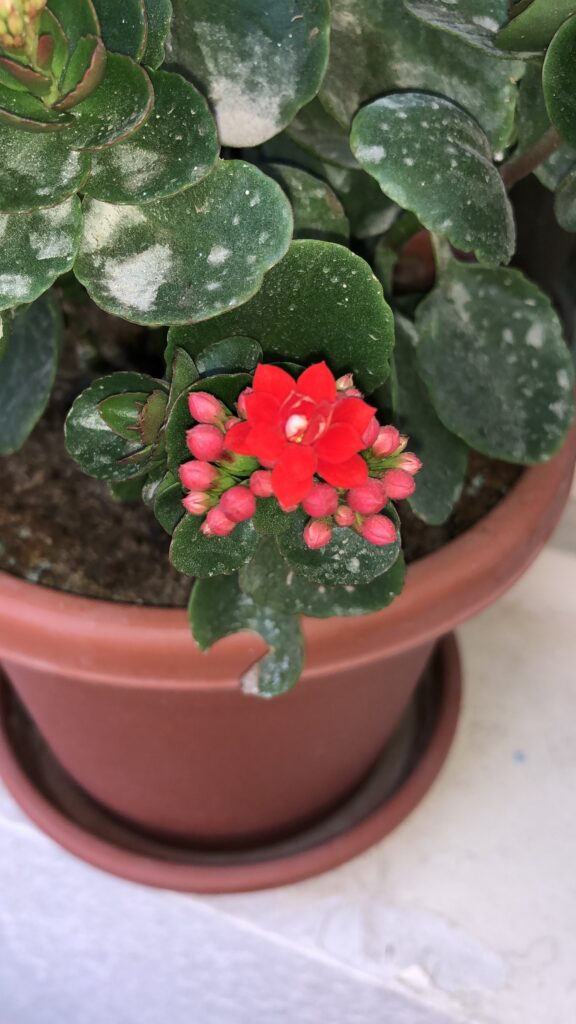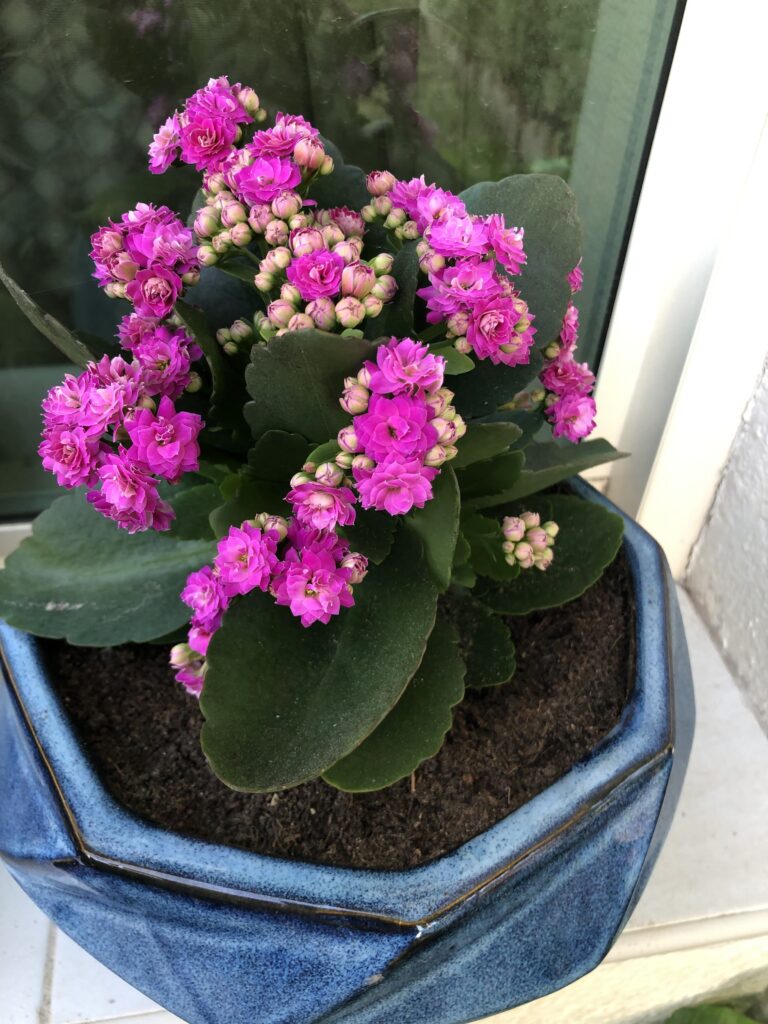Kalanchoes are some of the prettiest flowering succulents which can live both indoor and outdoor. I put my Kalanchoes out during the winter and spring months in the GULF, but elsewhere you would take them out in summer under the shade. Mine don’t get direct sun and merrily bloom outdoor from October to April after which I bring them indoors.
A little information about the plant taken from
https://www.thespruce.com/growing-kalanchoe-plants-1902982
The genus Kalanchoe includes more than 100 species of plants, but only a few are regularly seen in cultivation. The most recognizable is Kalanchoe blossfeldiana, usually known simply as kalanchoe. Native to Madagascar and closely related to the jade plant, K. blossfeldiana is a succulent perennial with scallop-shaped leaves and umbels of flower clusters that extend above the foliage. It has an especially long bloom period when compared to other succulents. Kalanchoe thrives in arid environments and is a popular, easy-to-grow houseplant. Growers are drawn to kalanchoe for its ease of care and interesting leaves, and for flowers that bloom repeatedly if the light exposure is properly controlled.
Kalanchoe is slow-growing, on average taking between two and five years to reach mature size. Available in pretty shades of red, pink, yellow, and white, Kalanchoe can be easily found at many grocery stores, nurseries, and florists, especially around the holiday season. However, homeowners who have curious pets at home should be careful about where they keep their kalanchoe—all parts of the plant are toxic to cats and dogs.

Kalanchoes belong to the succulent family so well-draining soil is key. The biggest problem they suffer from is overwatering and perhaps mealybugs and aphids. They make also get afflicted by downy mildew if you water the leaves. They don’t need much watering and can succumb to root rot easily. They also do not need much fertilizing. I use a mix of vermiculite/perlite along with regular potting soil and home compost and potting soil 0.5:1:1:1. If you think they need it top dress with some compost once in the season and use a liquid fertilizer once in a month are you are set. If blooms are not forthcoming adding a phosphorous-rich fertilizer helps.
But the plant has an interesting feature which many don’t know about. The bloom cycle is set off by having the plant in 14 hours of darkness for about six weeks. About 4 months after this the plant will produce its beautiful flowers. Also, remember to pinch off the spent flowers regularly to encourage more blooms.
Propagation can be done both by seeds and cuttings. I have had success by just pushing the broken stems into the same pot as the mother plant. However, it is a good idea to regularly prune your plants and make space and nourishment for the mother plants. Just cut off the offshoot with sterilized secateurs at a 45-degree angle at the node to the mother plant. Let it callus in the shade for a few days and then dip in rooting hormone and plant in the same soil mix as the mother plant. DO NOT water the cutting and let it sit in bright but indirect light. It should root in a month. I have never seen Kalanchoe seeds here in the GULF but have read that seeds are available.
Kalanchoes also can be repotted after the blooms are done. In fall in the West, but in early summer in the Gulf soon after you take them in.
These are lovely trouble-free plants to have and bloom indoors well if given bright natural daylight. They come in a variety of colors and can really cheer up your day.









Recent Comments